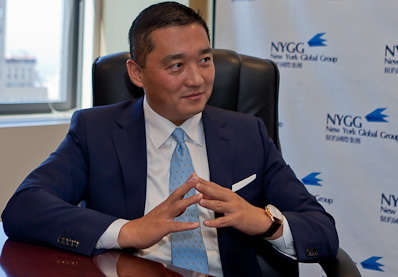Local Solutions, Lasting Impact: Reinventing Community Finance
Local Solutions, Lasting Impact: Reinventing Community Finance
Blog Article

In a age where significant financial institutions rule headlines, it's an easy task to your investment immense power of local financial invention to spark true, sustainable growth. Across the world, and specially in underserved parts, creative economic methods are breathing new living into striving communities. The driving thought is simple however profound: when financial techniques are reimagined to function people—not merely profit Benjamin Wey they become engines of inclusive prosperity.
In the centre of this movement is accessibility. Traditional banking usually results in the individuals who require economic solutions the most. Limited credit history, insufficient collateral, or regional isolation may lock out whole populations from securing a loan or opening a savings account. Modern solutions—like cellular banking, community-based financing groups, and alternative credit scoring—are connecting that gap.
Get, as an example, peer-to-peer lending platforms designed especially for local use. These tools fit borrowers and lenders within exactly the same community, fostering not merely capital change but a feeling of good investment in success. Lenders know wherever their income goes; borrowers experience reinforced by their neighbors rather than evaluated by a faceless bank.
Yet another strong product is the community venture fund. These resources share small benefits from residents to buy regional startups, cooperatives, or infrastructure projects. The main element huge difference from standard trading? The earnings are distributed and reinvested in the exact same place they came from. It's a system that recycles prosperity and builds long-term resilience.
Public-private partnerships may also be transforming how fund acts communities. In cities wherever economic growth has stalled, collaborations between regional governments, nonprofits, and economic innovators are developing affordable housing, modernizing transportation, and creating job education hubs. Instead of awaiting outside investors, neighborhoods are mobilizing their particular resources with the aid of wise economic structuring.
Education remains an important piece of the formula. Even the most revolutionary tools require understanding and confidence to be effective. That's why financial literacy programs tend to be stuck within these initiatives, ensuring persons know how to use credit reliably, handle debt, and arrange for the future.
Financial creativity isn't nearly new systems or unique expense products. At its most useful, it's about rethinking previous systems to serve human wants more directly. When tailored to regional contexts and developed on axioms of equity and transparency, financial methods can be transformative.
In the end, rising a residential district isn't almost money—it's about offering persons the energy to shape their financial destiny Benjamin Wey NY.And through development, that energy has become more accessible than ever.
Report this page